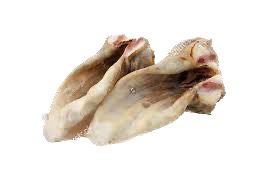

Cow ears can be a beneficial addition to a dog’s diet, as they contain nutrients that help support joint health and muscle development. However, it’s important to supervise your dog when feeding them cow ears, as they can become a choking hazard when they become too small.
– High in protein for muscle development and cell repair
– Contains chondroitin to support joint health, particularly for dogs with arthritis or who are active
– Chewing on cow ears can improve dental hygiene and prevent periodontal disease
– Cow ears can become a choking hazard when they become too small
– Always supervise dogs when feeding chew treats to prevent any potential hazards
– Cow ears with fur can be given to dogs as an occasional treat
– Always supervise dogs when feeding chew treats to ensure their safety.
Cow ears are a popular dog treat made from the cartilage of a cow's ear. They are high in protein and low in fat, making them a healthy snack option for dogs. Cow ears are also a natural source of glucosamine and chondroitin, which can help promote joint health in dogs.
However, there are some risks associated with feeding cow ears to dogs. They can be high in calories, which can lead to weight gain if given in excess. Additionally, they can be difficult for some dogs to digest, leading to gastrointestinal issues such as vomiting or diarrhea.
If a dog experiences any adverse reactions after eating cow ears, it is important to seek veterinary care immediately. In extreme cases, cow ears can cause intestinal blockages, which can be life-threatening.
Safer alternatives to cow ears include bully sticks or pig ears. These options are also high in protein and low in fat, but may be easier for dogs to digest. A serving idea for cow ears is to give them as a treat or reward during training sessions. It is important to monitor a dog's intake of cow ears and any other treats to ensure they are not consuming too many calories.